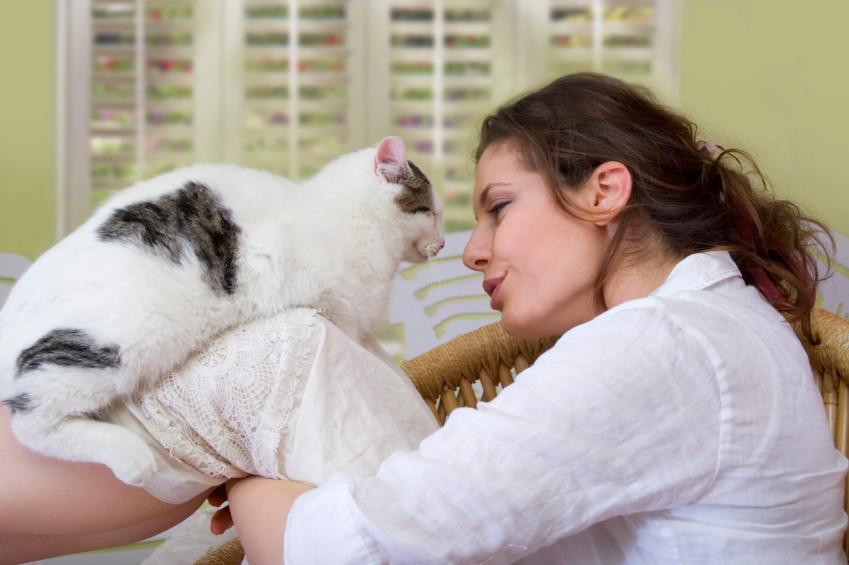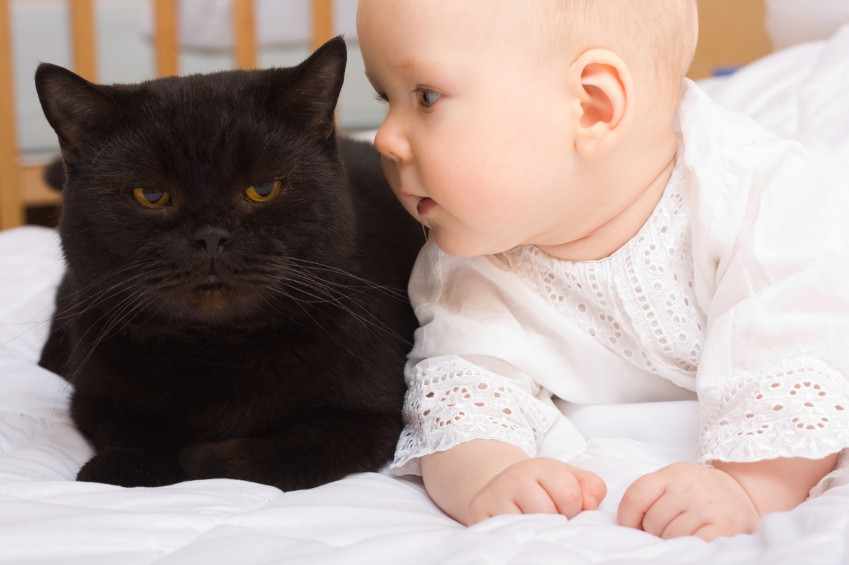Bringing a newborn baby home is a life-changing experience, and for families with feline members, it’s natural to wonder how the cat will adjust to the new arrival. While Cats And Newborns can indeed coexist peacefully and even form loving bonds, careful preparation and management are key to ensuring a safe and harmonious environment for everyone. This guide provides essential steps for introducing your cat to your newborn, focusing on safety, stress reduction, and creating a positive relationship between your furry friend and your little one.
Preparing Your Cat for a Newborn Baby
Cats are creatures of habit, and significant changes in their environment can cause stress. Preparing your cat gradually throughout your pregnancy is crucial for a smooth transition.
Understanding Toxoplasmosis and Pregnancy
One of the primary concerns for expecting parents is toxoplasmosis, a parasitic infection that can be transmitted through cat feces. While it’s a valid concern, understanding the facts can alleviate anxiety and guide preventative measures. Toxoplasmosis is contracted by cats primarily from eating raw meat or coming into contact with infected soil. Pregnant women who contract toxoplasmosis can face serious complications, including miscarriage or birth defects. However, simple precautions can significantly minimize the risk.
To protect yourself, it’s vital to avoid changing the litter box yourself. If this isn’t possible, always wear gloves and wash your hands thoroughly afterward. Gardening also poses a risk as cats may use gardens as litter boxes, so always wear gloves when gardening and when washing raw fruits and vegetables. Avoid consuming raw or undercooked meat, and ensure your cat is fed cooked or commercial cat food. Scooping the litter box at least twice daily is also recommended, as toxoplasmosis oocysts take 24-48 hours to become infectious.
Gradually Introducing Baby-Related Changes
Cats are sensitive to changes in their routine and environment. Start acclimating your cat to baby-related sights, sounds, and smells well before the baby arrives. Begin playing recordings of baby sounds at low volumes, gradually increasing the volume over time. This helps desensitize your cat to the new noises they will be hearing.
Introduce baby-related scents by using baby lotion or powder on your hands before interacting positively with your cat, such as during petting or playtime. This helps create positive associations with the new smells. Set up nursery furniture, like the crib and changing table, as early as possible. Allow your cat to explore these new items under supervision. After a few weeks of exploration, decide which surfaces you want to be off-limits, such as the changing table and crib.
To deter your cat from jumping on these surfaces, make them unappealing. A highly effective method is to use double-sided sticky tape or specially designed deterrent mats. Cats dislike sticky surfaces and will quickly learn to avoid them. Start this deterrent process at least a month before the baby is due to give your cat ample time to adjust.
Litter Box Relocation
If your cat’s litter box is currently located in the room that will become the nursery, begin moving it to its new location gradually, several months before the baby arrives. Move the litter box just a few inches each day. This slow transition minimizes stress and reduces the likelihood of your cat eliminating outside the litter box. Moving it too quickly can lead to accidents as your cat may become confused and revert to using the original spot. Once the litter box is fully relocated, place a solid, cat-proof object like a diaper pail or dresser over the old litter box location to further discourage your cat from returning to that spot.
Adjusting Caregiver Routines
Newborns demand a significant amount of time and attention. If any cat care responsibilities will shift from one parent to another after the baby’s arrival, implement these changes one to two months before the birth. This includes feeding, grooming, playtime, and even sleep routines. Allow your cat time to adjust to the new caregiver’s style and build a comfortable relationship with them before the added stress of a new baby.
Welcoming Your Baby Home and Cat-Baby Interactions
The first few days after bringing your newborn home are crucial for setting a positive tone for cat-baby interactions.
The Initial Reunion
When you first arrive home from the hospital, prioritize a calm and quiet reunion with your cat. Enter your home and, without the baby or other family members present, greet your cat in a peaceful room. Spend a few minutes reconnecting with your feline friend, offering gentle petting and reassurance. This acknowledges your cat and helps reduce any feelings of being displaced or forgotten. Once this initial reconnection is established, you can then introduce your partner, baby, and other family members into the environment.
Introducing Baby’s Scent
Before allowing direct interaction, introduce your cat to the baby’s scent in a controlled manner. Place a used receiving blanket or a piece of the baby’s clothing in a safe and quiet area where your cat can investigate it at their own pace. This allows your cat to become familiar with the baby’s scent without feeling overwhelmed or threatened.
Ensuring Baby’s Safe Sleep Space
Creating a safe sleep environment for your baby is paramount, especially when cats are in the home. It is essential to ensure that the crib and any other baby sleeping areas are completely off-limits to your cat. Newborns lack the ability to move or turn their heads, and a cat seeking warmth who cuddles too close to the baby’s face could inadvertently obstruct the baby’s breathing.
 Peaceful coexistence of a cat and a newborn baby at home.
Peaceful coexistence of a cat and a newborn baby at home.
To prevent any accidental access, keep the nursery door closed, especially during naps and nighttime sleep. If a door isn’t feasible, consider installing a temporary screen door or using a crib tent, a mesh cover that encloses the crib and prevents cats from entering. These measures also prevent the rare but concerning issue of a stressed cat urinating in the crib.
 A cat carefully watching over a newborn baby in a crib.
A cat carefully watching over a newborn baby in a crib.
Bonding Time and Supervision
While adapting to life with a newborn, remember to continue providing your cat with attention and affection. When the baby is safely sleeping, take the opportunity to relax and bond with your cat. Supervised interaction between your cat and baby can be gradually introduced as the baby grows, always ensuring the cat’s claws are trimmed and never leaving them unsupervised together.
By taking these proactive steps, you can create a safe, loving, and harmonious home where both your newborn and your cat can thrive. With patience, understanding, and consistent effort, your cat and baby can become cherished members of the family, coexisting peacefully and perhaps even forming a unique bond.


